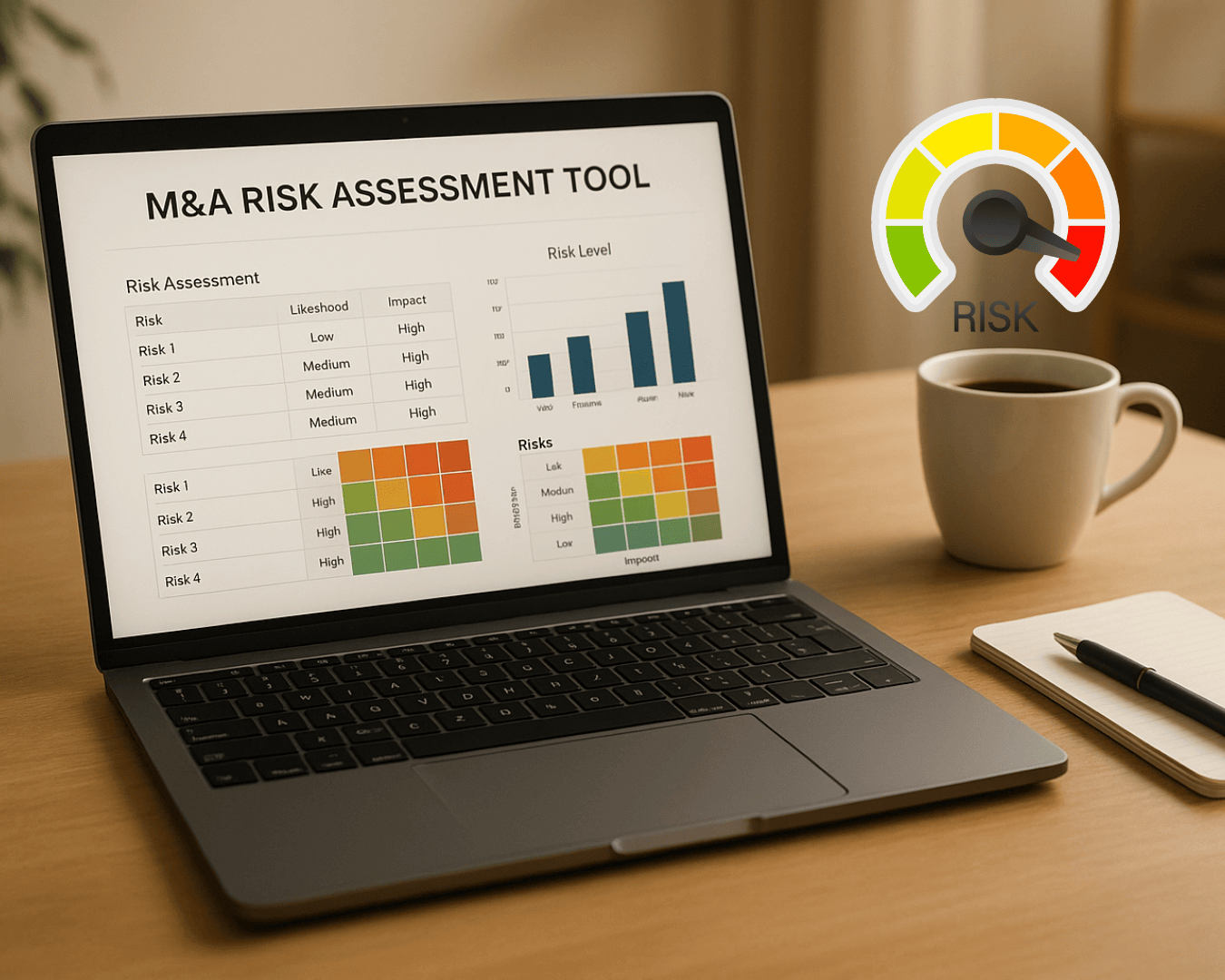Key account transitions can make or break business acquisitions. Here's a quick summary of what works, what to avoid, and how to measure success:
- What Works: Clear communication plans, dedicated transfer teams, tailored account management, and structured knowledge transfer.
- What to Avoid: Knowledge loss, misaligned company cultures, and losing key staff members.
- How to Measure Success: Track revenue retention, customer satisfaction (NPS/CSAT), and service quality metrics like response times and issue resolution.
These strategies, drawn from 15 case studies across industries like SaaS, manufacturing, and services, show that smooth transitions rely on preparation, communication, and monitoring. Keep reading to learn actionable steps and tools to ensure seamless key account transitions.
Key Account Management - Transitioning
How We Analyzed These Cases
We reviewed key account transitions in acquisitions between 2020 and 2024, focusing on both successes and challenges to uncover practical insights. A structured approach was used to evaluate various scenarios and outcomes, forming the basis of our detailed selection and analysis process.
How Cases Were Selected
We used specific criteria to identify the most relevant cases:
- Revenue Threshold: Included companies where key accounts made up at least 25% of total revenue.
- Transaction Size: Focused on deals valued between $5 million and $50 million.
- Data Availability: Prioritized cases with detailed transition records and measurable outcomes.
- Industry Distribution: Ensured coverage across multiple industries to identify common patterns.
This method led to the selection of 15 cases that met all these requirements.
Types of Businesses Studied
To ensure the findings could apply broadly, we analyzed cases from a variety of industries and business models. Here’s how the cases were distributed:
| Industry Sector | Number of Cases | Average Account Size |
|---|---|---|
| SaaS/Technology | 5 cases | $750,000/year |
| Manufacturing | 4 cases | $2.1 million/year |
| Professional Services | 3 cases | $450,000/year |
| Distribution | 3 cases | $1.8 million/year |
The businesses studied had annual revenues ranging from $10 million to $75 million, managed between 3 and 7 key accounts, and operated in multiple states (80% had multi-state operations). On average, transitions were completed in 4.5 months, and the companies employed 25 to 150 staff members.
The selected cases reflected a variety of transition scenarios, such as:
- Full management team replacements
- Partial retention of existing teams
- Geographic relocations
- Adjustments to service models
- Migrations to new technology platforms
This range of scenarios allowed us to identify patterns and practices that support smoother key account transitions.
What Works: Proven Transfer Methods
Based on our case analysis, these strategies have consistently led to smooth transitions for key accounts.
Building Clear Communication Plans
Effective communication is crucial for successful transitions. The most seamless transitions followed a structured, step-by-step approach:
- Start with pre-announcement review meetings and develop a detailed transition plan.
- On closing day, hold joint leadership meetings and formally introduce clients to their new contacts.
- Provide regular updates and ensure dedicated support throughout the process.
- Conduct periodic performance reviews to address any concerns and maintain long-term success.
Establishing Dedicated Transfer Teams
Having specialized teams in place ensures continuity during transitions. The most effective teams included:
- Account Specialists with in-depth knowledge of client needs.
- Technical Leads responsible for systems integration and smooth operations.
- Relationship Managers who act as consistent points of contact throughout the process.
Companies with these specialized roles experienced fewer disruptions and a more seamless transition period.
Tailoring Account Management
Adapting account management to align with each client’s specific needs can make a big difference. This involves updating agreements, respecting existing communication practices, and ensuring key personnel remain involved. Key steps include:
- Service Level Agreements (SLAs): Review and adjust SLAs soon after the acquisition to maintain service standards, identify areas for improvement, and establish clear escalation paths.
- Communication Preferences: Honor existing communication practices while gradually introducing improved tools and processes.
- Resource Allocation: Retain key personnel and add expertise where necessary to reinforce client trust during the transition.
These approaches, drawn from real-world examples, have consistently delivered smoother transitions and stronger client relationships.
sbb-itb-a3ef7c1
What to Avoid: Major Risks
Preventing Knowledge Loss
Losing important client information during transitions can create serious challenges. To avoid this, focus on these strategies:
- Detailed Documentation Systems: Use digital knowledge bases to store client preferences, history, and specific requirements. Include structured handover guides for clarity.
- Organized Handover Processes: Develop thorough transition guides for key accounts. These should include client needs, communication habits, and historical details.
- Regular Team Knowledge Sharing: Host team meetings to share client insights, ensuring knowledge is distributed and not limited to a few individuals.
Managing Company Culture Gaps
Aligning corporate cultures is just as important as protecting information. Misaligned cultures can lead to inconsistent service, communication issues, and conflicting problem-solving methods. Here's how to address this:
- Cultural Evaluation: Review the service philosophies and client management styles of both companies before planning the transition.
- Team Workshops: Arrange joint sessions to foster mutual understanding and create a unified approach to client service.
- Client-Focused Priorities: Concentrate on maintaining service quality and client satisfaction rather than rushing into cultural changes.
Keeping Key Staff Members
Retaining critical personnel is essential for ensuring account stability and preserving client relationships. When key staff leave, they often take institutional knowledge and connections with them. Consider these strategies:
- Identify Key Players Early: Pinpoint employees who hold vital client relationships and account knowledge.
- Offer Clear Career Opportunities: Provide clear paths for growth within the new organization to keep key team members engaged.
- Provide Retention Incentives: Use targeted bonuses and improved benefits to encourage essential personnel to stay during the transition.
Addressing these challenges is crucial for maintaining strong client relationships and ensuring a smooth acquisition process.
How to Track Transfer Results
Once risks have been addressed, keeping a close eye on transition metrics is crucial for maintaining stable accounts.
Setting Success Metrics
To evaluate how well the transition is going, focus on key performance indicators (KPIs) in two main areas:
-
Revenue Metrics:
- Monthly Recurring Revenue (MRR) retention
- Year-over-Year (YoY) revenue growth
- Average revenue per account
- Contract renewal rates
-
Relationship Indicators:
- Net Promoter Score (NPS)
- Customer Satisfaction (CSAT) scores
- Response times
- Escalated issues
- Client engagement levels
Here’s a simple framework to categorize these KPIs:
| Metric Category | Key Indicators |
|---|---|
| Financial Health | MRR Retention, Contract Renewals |
| Client Satisfaction | NPS, CSAT |
| Service Quality | Response Time, Issue Resolution |
Once your KPIs are set, consistent tracking becomes vital for maintaining healthy accounts.
Monitoring Account Health
Keeping an eye on account stability post-transition requires a structured approach:
-
Regular Reviews:
- Schedule monthly account check-ins
- Track the frequency and quality of communications
- Analyze usage patterns
- Note any changes in client behavior
-
Automated Alerts:
- Set up alerts for unusual account activity
- Monitor response times and support ticket resolutions
- Keep tabs on engagement with key contacts
- Regularly review client satisfaction surveys
-
Long-Term Indicators:
- Look for potential account growth opportunities
- Track referral rates
- Measure participation in new programs or initiatives
- Evaluate how smoothly new systems are being integrated
Using digital tools to document these activities makes it easier to spot and address problems before they escalate.
Conclusion: Main Findings
Steps for Success
Case studies highlight that successful key account transitions rely on a few essential steps:
-
Pre-Transfer Assessment
Document existing account relationships and service agreements. Identify risks and outline strategies to address them. -
Communication Strategy
Develop tailored communication plans for each key account. Schedule in-person meetings with stakeholders and set clear timelines. -
Team Development
Form dedicated transition teams with members from both organizations. Create detailed knowledge transfer protocols and pair outgoing account managers with their replacements for mentorship. -
Monitoring Framework
Set baseline performance metrics. Track account performance through regular 90-day reviews and automated alerts to catch any issues early.
These steps summarize the core strategies uncovered in our analysis.
Tools from Clearly Acquired

Digital tools can simplify the transition process. Clearly Acquired offers features designed to make these steps easier to implement:
- Deal Management Hubs: Centralize all documentation and communication in one secure platform.
- Custom Dashboards: Monitor account health and key performance indicators in real-time.
- In-Platform Messaging: Ensure clear, consistent communication among stakeholders.
- Automated NDA Deployment: Safeguard sensitive account details during transitions.
For managing multiple account transitions, the platform’s advanced search and verification tools keep everything organized and secure. The integrated deal management features help ensure no critical steps are overlooked during the process.










.png)







































.png)








































%20Loan%20Application%20Checklist.png)


















